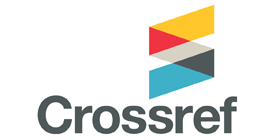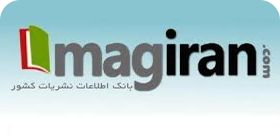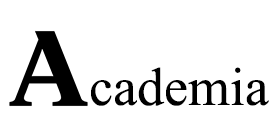Analytical Model of Identity in Middle School Students
Keywords:
Identity, identity formation, middle school studentsAbstract
Purpose: The aim of the present study was to provide an analytical model of identity for middle school students.
Methods and Materials: The research method was applied in terms of purpose, mixed (qualitative-quantitative) in terms of data type, exploratory in terms of data collection time, cross-sectional, and according to data collection methods and the nature of the research, a combination of meta-synthesis and content analysis in the qualitative part, and descriptive-survey in the quantitative part. In the qualitative section, the statistical population included all theoretical foundations and related literature from both domestic and international databases, which were studied using a systematic elimination method based on the PRISMA model and non-random purposeful sampling. For content analysis, theoretical and empirical experts were involved, with 19 experts selected through non-random purposeful sampling as participants. In the quantitative section, the population comprised middle school students, from which 272 students were selected using a multi-stage cluster random sampling method, calculated based on structural equation modeling. Data collection tools in the qualitative section (meta-synthesis) included a systematic literature review, and in the content analysis stage, semi-structured interviews were conducted. In the quantitative section, a researcher-made questionnaire derived from the indicators identified in the qualitative section was used to measure the internal validity of the model, and another researcher-made questionnaire derived from the model components was used to measure the external validity. In the qualitative section, the validity was checked using the PRISMA model checklist, and reliability was measured using Cohen's Kappa coefficient. In the Delphi and content analysis sections, validity was assessed through alignment with prior research, researchers, and participants, while reliability was checked by recording the research process and ensuring consistency within and between researchers. In addition, in the quantitative section, validity was examined through content and construct validity (AVE < 0.5), and reliability was evaluated using Cronbach's alpha and composite reliability coefficients (α and CR > 0.7). The results from both the qualitative and quantitative sections indicated that the instruments were both valid and reliable. Data analysis methods in the qualitative section included thematic analysis using Maxqda-V2018 software, while in the quantitative section, statistical and inferential analyses were performed using SPSS-V23 and Smart PLS-V3 software.
Findings: The research findings revealed that identity in middle school students encompasses scientific identity (specialized knowledge, membership in the academic community, research skills, and commitments), social identity (group membership, social mapping, interaction, nationalism, political and social identity), and personal identity (self-awareness, roles, experiences, and historical identity). Strategies for improving identity included skill development and support provision. Based on the identified dimensions, components, and indicators, an identity model for middle school students was developed, alongside strategies for enhancing it.
Conclusion: The results of this study contribute not only to students' personal growth and development but also to the improvement of their mental health, academic success, and social relationships. Given the identity challenges adolescents face at this stage, providing effective and practical strategies to improve their identity is of great significance.
Downloads
References
Abramson, L. L., & Schachter, E. P. (2024). Beginning Teachers Navigating Identity Development Transitions: Identity Motives and Commitment to Teaching. Education Sciences, 14(11), 1170. https://doi.org/10.3390/educsci14111170
Adib Manesh, M. (2023). The Effectiveness of Responsibility Training Using Reality Therapy on the Identity Crisis of Female High School Students in Islamabad Gharb. Quest in Human Sciences Education, 9(30), 19-36. https://humanities.cfu.ac.ir/article_2740.html
Appachu, H., & Singh, J. K. (2024). Understanding the social identity of adolescents in the Indigenous Kodava Community of India. Journal of Research on Adolescence. https://doi.org/10.1111/jora.12962
Baradaran Haqir, M., Zeinali Zadeh, S., & Mohseni, T. (2023). The Role of Teachers in Civilization Building with an Emphasis on Students' Identity Based on the Ideological Framework of Islamic Revolution Leaders. Theory and Practice in Teacher Education, 9(15), 239-268. https://tpbc.cfu.ac.ir/article_2989.html?lang=en
Bischof, G. (2017). Austrian historical memory and national identity. Routledge. https://doi.org/10.4324/9781351315128
Ghorbani, A., & Yazarloo, S. (2021). Structural Equation Modeling Identity Styles and Self-efficacy With the Attitude to Crime in Students. Sociology of Education, 7(1), 1-14. https://doi.org/10.22034/ijes.2021.244678
Gouvea, J. (2020). Recent research on students' identities: Advancing theory and practice to disrupt inequities. CBE-Life Sciences Education, 19(2), fe3. https://doi.org/10.1187/cbe.20-03-0051
Hester, S., & Housley, W. (2017). Language, Interaction and National Identity: Studies in the social organisation of national identity in talk-in-interaction. Routledge. https://doi.org/10.4324/9781315250885
Hong, J., & Perez, T. (2024). Identity and learning: Student and teacher identity development. In Handbook of Educational Psychology (pp. 269-290). Routledge. https://doi.org/10.1080/00461520.2023.2292713
Hoseini, S. B. (2013). The Media Literacy as a Strategy to Strengthen Individual and National Identity. National Studies Journal, 14(54), 99-120. https://www.rjnsq.ir/article_98897_7138baf31a636941de7b8bb515065204.pdf
Jahanshahi, R., Haghighatian, M., & Bahian, S. (2024). Sociologically Investigating the Impact of Cultural Factors on the National Identity Reproduction in Students. Sociology of Education, 10(1), 183-192. https://doi.org/10.22034/ijes.2023.2013621.1481
Jahanshahi, R., Haghighatian, M., & Behian, S. (2024). Examining Structural Threat Factors Affecting the Reproduction of National Identity in Adolescents (Case Study: Students of Kohgiluyeh and Boyer-Ahmad Province). Sociology of Education(33), 20-31. https://www.iase-jrn.ir/article_715967.html
Kermani, H., & Saei, M. (2017). The Impact of Using Social Networking Sites on Ethnic Identity among Tehran University Students. Interdisciplinary Studies in Media and Culture, 7(1), 105-121. https://mediastudy.ihcs.ac.ir/article_2704.html
Litam, S. D. A., & Oh, S. (2022). Ethnic identity and coping strategies as moderators of COVID-19 racial discrimination experiences among Chinese Americans. Counseling Outcome Research and Evaluation, 13(2), 101-115. https://doi.org/10.1080/21501378.2020.1814138
Mahdian, R., Poushaneh, K., Rezazadeh, H. R., & Maleki, H. (2022). Designing a National Identity Curriculum Model for the Second Elementary Grade. iase-idje, 5(3), 128-141. https://doi.org/10.61186/ijes.5.3.128
Mahmoudi, S., & Askari, S. (2018). National Identity in Adolescents and Youths (A Meta-Analysis of Available Persian Articles). Quest in Human Sciences Education, 4(10), 64-81. https://journals.cfu.ac.ir/article_691.html
Malmir, M. (2023). Assessment of National, Ethnic, and Class Identity Dimensions in Iranian Society. Social Sciences Quarterly, 30(102), 1-29. https://qjss.atu.ac.ir/article_17928_e48cb18ceb365955a84656c29f3adeb8.pdf
O'Reilly, C., Maher, P. J., Smith, E. M., MacCarron, P., & Quayle, M. (2024). Social identity emergence in attitude interactions and the identity strengthening effects of cumulative attitude agreement. European Journal of Social Psychology, 54(1), 97-117. https://doi.org/10.1002/ejsp.3000
Siteine, A. (2021). Knowledge and student identity. In Perspectives on the knowledge problem in New Zealand education: Towards equity (pp. 49-57). https://doi.org/10.1007/978-981-16-2908-2_5
Tanhaye Reshvanloo, F., Rajabi Joghortain, M., & Samadieh, H. (2024). Canonical Analysis of the Relations between Identity Styles and Self Handicapping in High School Students. Sociology of Education, 10(1), 236-245. https://doi.org/10.22034/ijes.2024.2007848.1445
Terrasse, M. (2021). Dimensions of belonging: relationships between police identity checks and national identity in France. Journal of Ethnic and Migration Studies, 47(15), 3600-3621. https://doi.org/10.1080/1369183X.2019.1578202
Downloads
Published
Submitted
Revised
Accepted
Issue
Section
License
Copyright (c) 2025 Mina Soltanian; Ali Mohebbi, Rouhollah Karimi Khoygani (Author)

This work is licensed under a Creative Commons Attribution-NonCommercial 4.0 International License.
















